Colombia, which recently emerged from a drawn-out armed conflict, is now suffering the consequences of booming agricultural development, leading to the destruction of natural ecosystems. Faced with devastating deforestation, we must adopt an area-specific approach. To restore the Colombian Páramos, an unparalleled high-altitude biotope, and to contribute to the socio-economic sustainability of local communities settled there for centuries, Reforest'Action is deploying a regenerative project on a landscape level.
A specific approach for a specific context
A landscape under pressure
Colombia is one of the most deforested countries in the world. Of the 114 million hectares available, livestock farming alone accounts for 39 million hectares, that is, more than 30% of the territory. Mainly located in the Andean region - where the project financed by Reforest'Action is located - it benefits mostly small independent breeders. Food crops now cover as much land as the Colombian forests, i.e. about 4% of the country's surface area.
Reforest'Action's mission in Colombia is rooted in the heart of the Andes, within the department of Nariño. It is located in the midst of endemic natural areas, the Páramos, which are being increasingly converted into pastureland and potato fields.
*Source : DANE, Colombian Institute of Statistics.
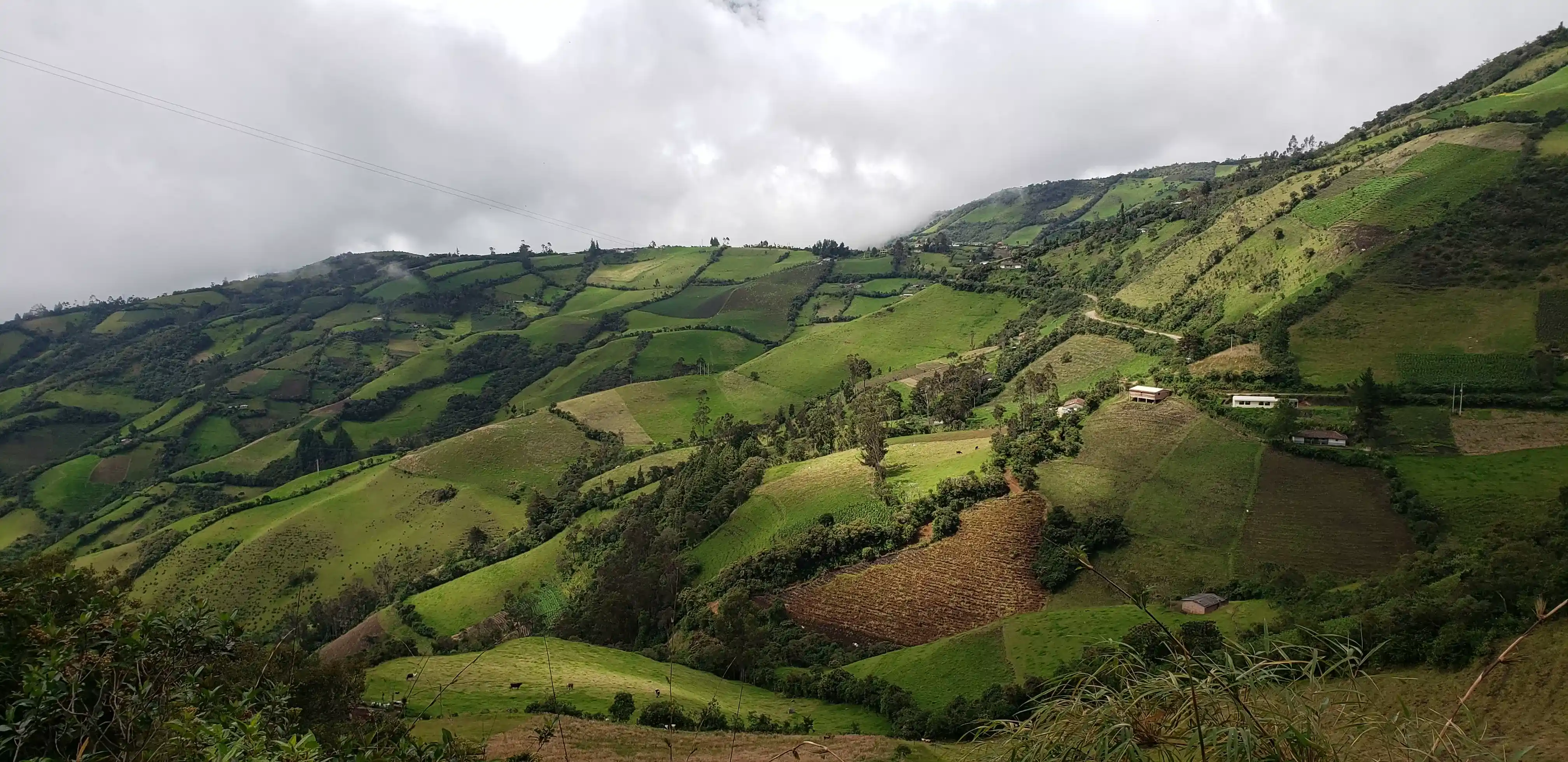
A regenerative approach
To counter the degradation of the Páramos while adapting to the specific context of the region, we are focusing on environmental, social and economic issues in a holistic manner. Through a landscape-scale perspective, which ensures the consideration of all the services provided by a territory, we are working towards the regeneration of these Altoandinian ecosystems.
Launched two years ago, the project includes four dimensions that are essentially needed to be considered as regenerative:
- Restoration of the Páramos and their biodiversity
- Increase of carbon sequestration by the Páramos
- Preservation of water resources and optimisation of soil quality
- Sustainability of the economic activity of local producers
The benefits generated by the project have an influence on the environment, but also an additional social and economic impact for the local communities. Find out more about each point below
Restoring Colombia's Páramos and their biodiversity
The Páramos, high-Andean curiosities
The project financed by Reforest'Action and led on site by the NGO Impulso Verde is located in several "complexes" that group together some of the rarest high altitude biotopes on the planet: the Páramos. Scattered on either side of the equator in the eastern Colombian Andes, they are located between 3,300 and 4,700 metres above sea level, marking the boundary between the "cloud forests" and the eternal snows.
The Páramos are the richest mountain ecosystems in terms of floral biodiversity on the planet. The most emblematic native species of this environment is undoubtedly the Espeletia, or "Frailejon" in Colombian. Covered with a silvery velvet fuzz made of mosses and lichens, nearly phosphorescent, these small and curious-looking plants can grow up to 3 metres high. Nicknamed "monks" in native language, they form a procession of misty silhouettes, creating an almost magical atmosphere. These specimens grow by barely a centimetre a year, and the tallest ones are therefore centuries old. Such an environment is not very suitable for many animals, but you can still meet some unusual species, such as the Andean bear, the mountain tapir or the pudu, known to be the smallest deer on earth. On the other hand, it is a transit area for many migratory birds, such as the colourful toucan pechigris.
Due to the expansion of agricultural land, the surface area of the Colombian Páramos is shrinking considerably. In addition, anthropic pressure is causing a major degradation of the ecosystem services provided by this unique biotope.

Restoration activities
In the project area, the regeneration of Páramos is carried out through planting activities within the degraded lands of private owners. Impulso Verde, our partner on the ground, works closely with 12 local producer associations to conduct the forestry work. This includes building community nurseries, training farmers, producing seedlings, planting trees as well as collecting and analysing monitoring data (production, distribution, GPS data).
The Páramos restoration, and their biodiversity, follows a demanding project design that must respect the land typology and the way of their inhabitants. Divided into several sections, the planting activities are spread out over the year, with an increase in the last months.
The first component consists in creating "living fences" around the agricultural plots. These dense hedges will act as windbreaks, which are particularly useful in this region exposed to cold drafts and will protect the crops and livestock of farmers.
The second component aims to reforest the riverbanks that run through the area. The planted trees will prevent soil erosion and provide shelter for wildlife living near the waterholes.
The third component involves the creation of more densely wooded islands through the afforestation of river basins and the reforestation of alto-andine forests, located at the borders of the Páramos. However, it is more difficult to convince beneficiaries to implement this design within their plots as it implies giving up a larger part of their land, which means less production in the short term.
The increase of the carbon stored by the Páramos is inherent to the ecosystem restoration. Afforestation or reforestation activities contribute to the fight against climate change through the creation of carbon sinks in the trees and soil of restored plots.
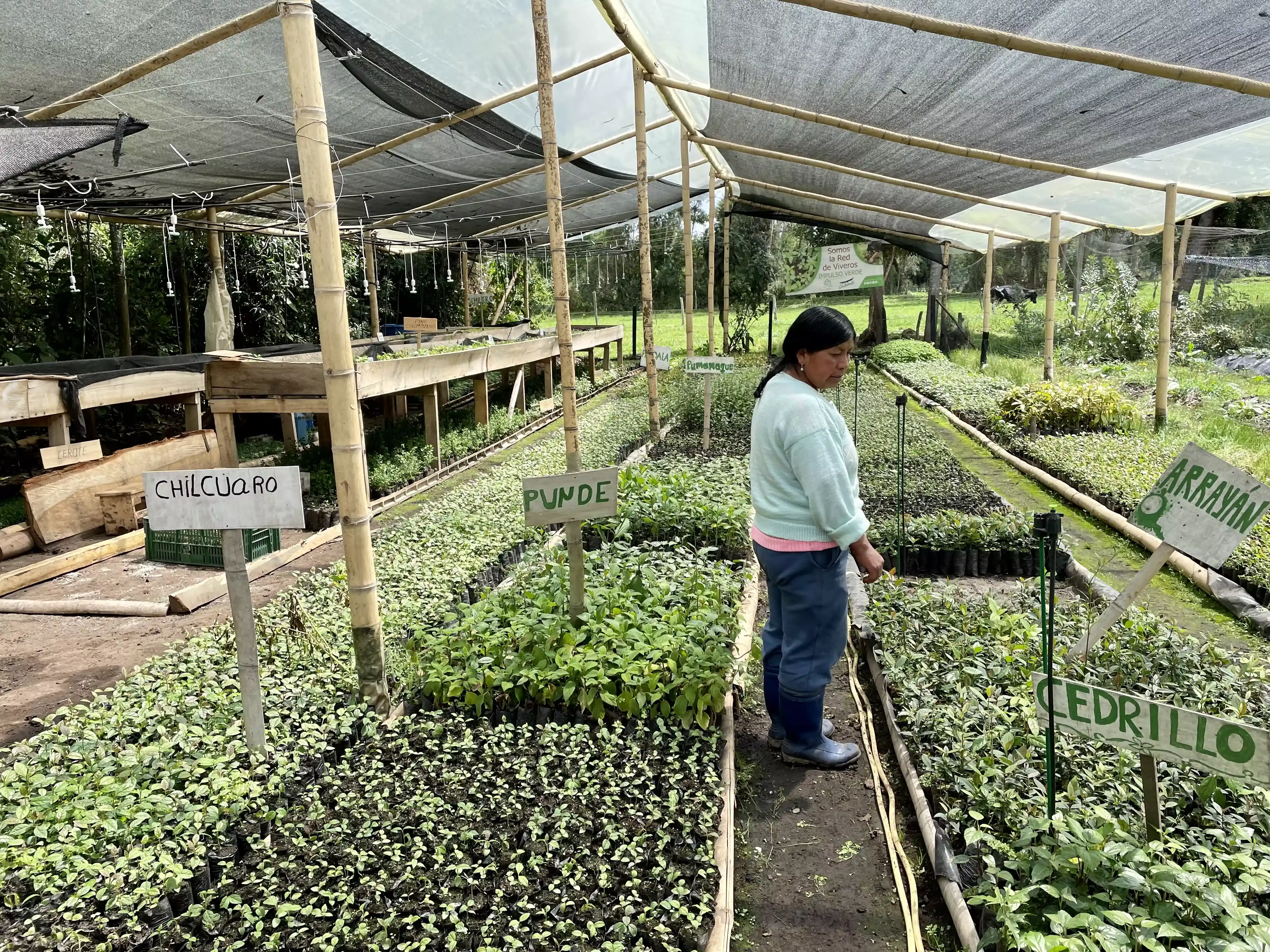
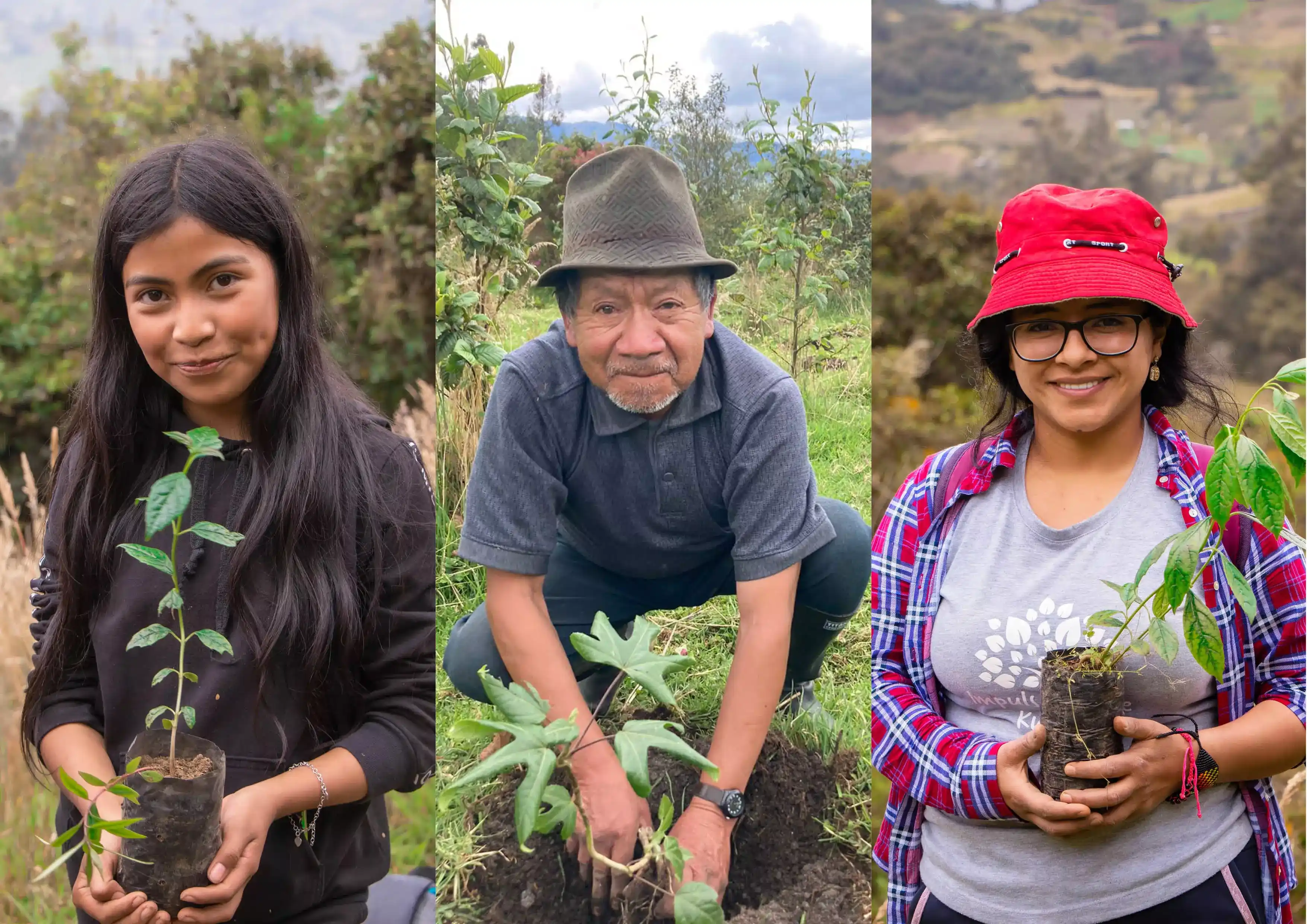
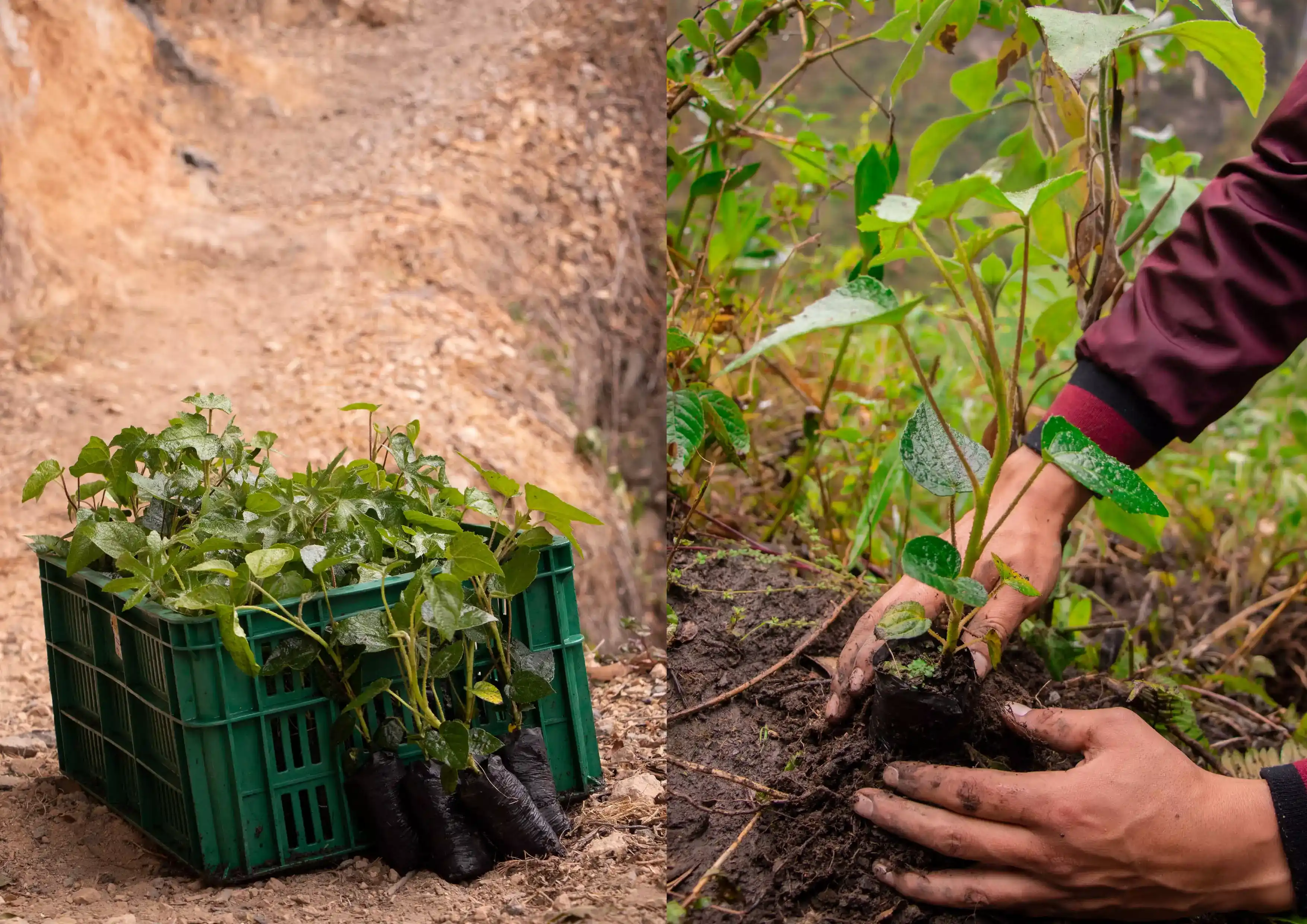
The project's audit
An audit of the project was carried out by Reforest'Action at the end of 2022, and the last monitoring was conducted by our partner in January 2023. Since the start of the plantings two years ago, 15 nurseries - 3 of which were recently built - have allowed the planting of more than 280,000 trees. In the last six months, the Nariño department has been hit by several heavy frosts and hailstorms that have affected the young trees. Due to climate change, these weather events are becoming more and more common. Due to the cold snaps, the mortality rate of the plantings was of 11% on average. This was overcome using "buffer" trees. In the future, preventive measures will be applied: selecting the most resistant species, such as alder and elder, protecting all trees with windbreaks, and favouring the lower stages that are less prone to frost.
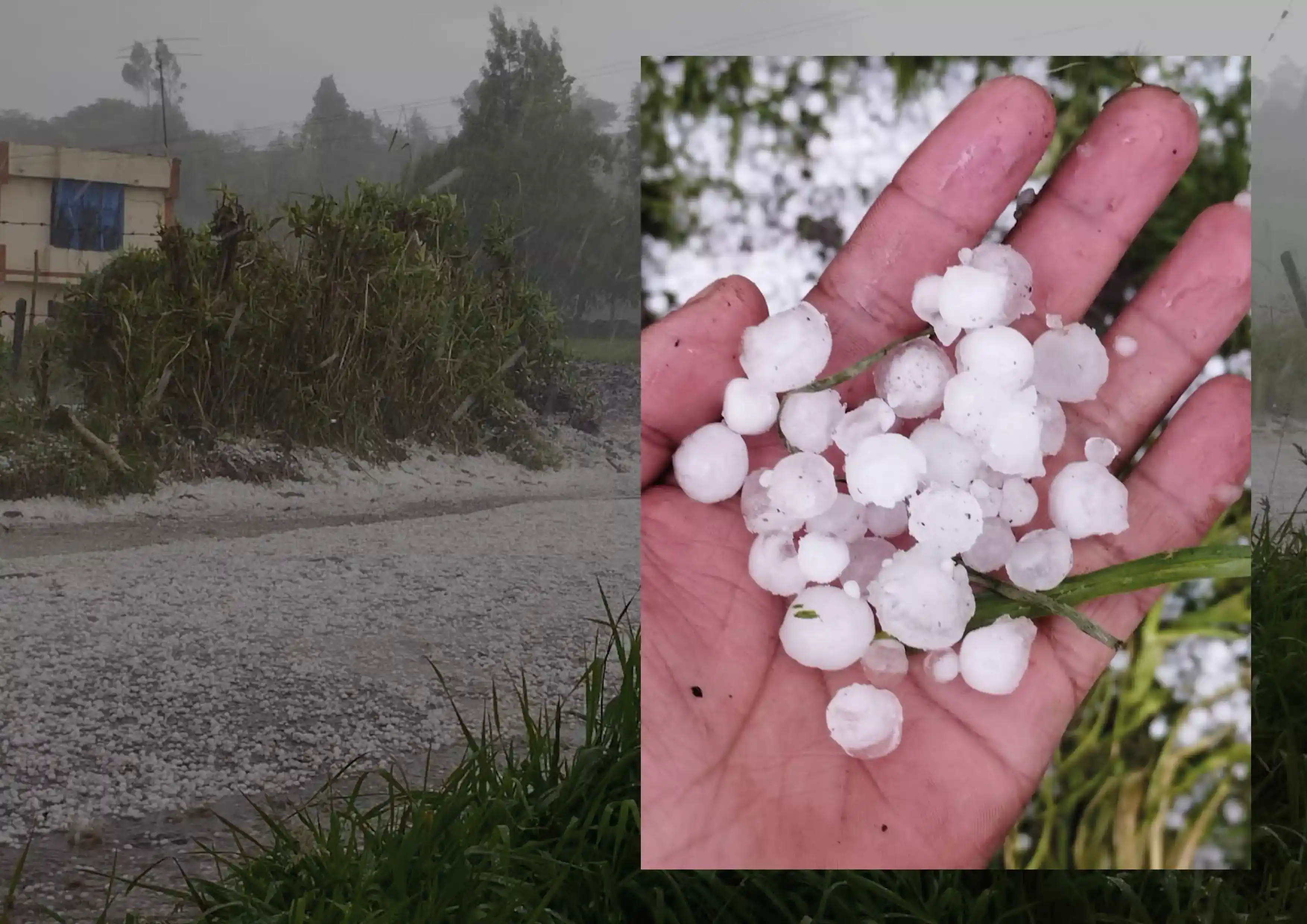
Preserving water resources and optimising soil quality
The Páramos, guardians of the watersheds
The Páramos are known for their cool and humid climate. The horizon is always covered by thick mists that cling to the plants, along with a constant fine rain. The air's humidity is therefore very high.
The soil of the Páramos is also quite special. It is peaty and acidic, almost black, rich in organic material but poor in nutrients. This is why only specific endemic species can grow there. Made up of volcanic ash, the land has the incredible capacity to retain water, acting like a real sponge and regulating water flows. The soil of the Páramos can retain up to 3 times its weight in water! As evapotranspiration in the area is very low, the stored water is not easily released into the atmosphere.
The leaves of Espeletias have the ability to capture moisture from the air and retain rainwater. Thus, these hairy plants play a major role in the water cycle: they return water to the soil and regulate stream flows.
These wetlands are therefore the main water reserves of Colombia: they provide drinking water to cities, irrigate crops in the valleys, feed hydroelectric dams... The Alto-Andean strata contribute to the hydrographic network of the country as of 60% of the consumed water.
Water accessibility, a priority
The reforestation area is located in the surroundings of the Chiltalzón, commonly known as the "water mount" in the Pasto language. This mountain provides water for about 100,000 inhabitants spread over several municipalities.
The degradation of this ecosystem has a strong impact on the access to water resources. Indeed, the department of Nariño regularly suffers from water shortages caused by the destruction of the Páramos. The restoration of this biotope will help to recover the water supply and, ultimately, to preserve this vital commodity. Other benefits are to be noted, such as the reduction of soil erosion and the mitigation of the risk of mudslides.
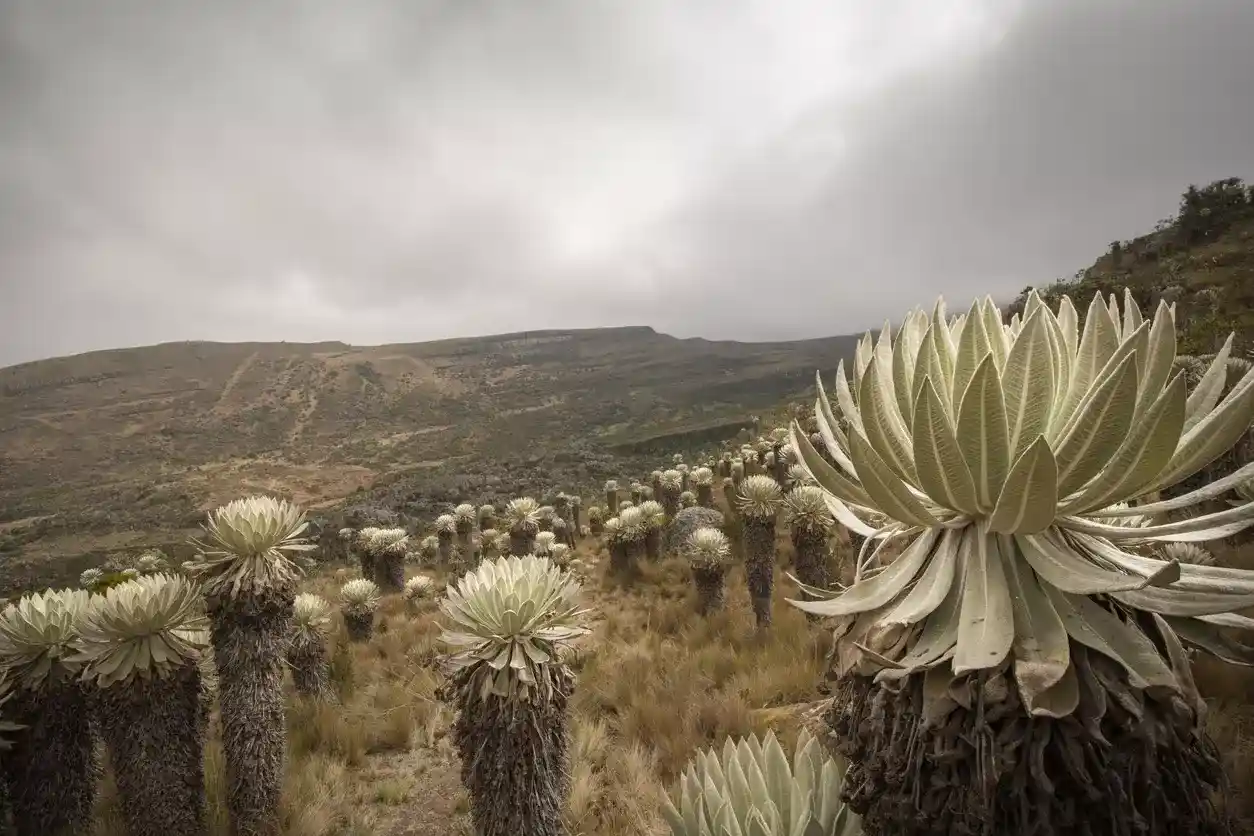
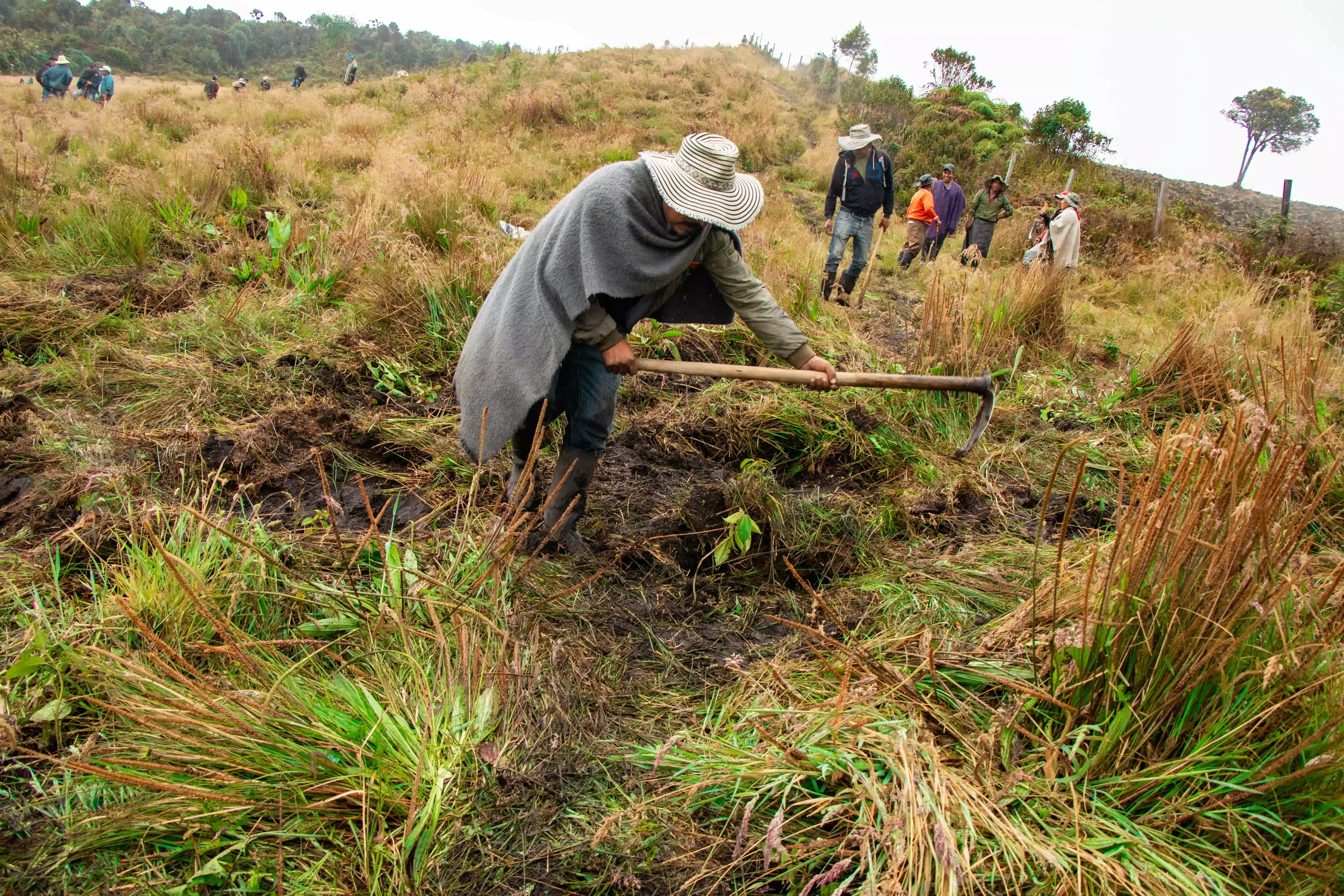
Sustaining the economic activity of local producers
The Pastos are ancestral communities in the south of Colombia, mainly located in the department of Nariño. Since the 5th century, this people have lived from agriculture and cattle breeding in the mountainous areas under the slopes of the Galeras volcano. The participatory dimension of the Impulso Verde project involves the Pastos in the regeneration activities of the Páramos. At least one third of the project participants are Pasto descendants, some of whom still live in the resguardos, Colombia's legal indigenous reserves.
The project, which currently includes 9 villages, benefits over 460 households through the development of various economic activities.
Strengthening of the silvopastoral model
The two biggest drivers of deforestation in Colombia are the meat industry, which was worth one million tons in 2019, and the dairy industry, which accounted for 7.3 million litres.
The project aims to promote a sustainable alternative to dairy farming, which is predominant in the region: silvopastoralism. This innovative practice consists in planting trees around and within the farmers' pastures. In addition to contributing to the well-being of the animals, the various native species planted provide a range of ecosystem services: fodder and wood production, natural soil fertilisation, biodiversity restoration, food security for local people, supply of medicinal and melliferous plants, and many others. Essential to the Páramos preservation, this environmental approach also increases milk production (+13% to 25% of milk per cow). The Colombian government, which wants to encourage a sustainable development of the territories, is supportive of silvopastoralism as a major solution to combat deforestation.

2022 was a key year for the development of the silvopastoralism focus as part of the project. Since January 2022, more than 76 ha of silvopastoral systems have been established, with a total of 22,800 trees of diverse indigenous species, including Aliso alder. Thanks to the collaboration with four dairy associations and the support of the FAO, nearly 3,000 local dairy farmers are already interested in the opportunity to sustain their activity. Meanwhile, the Impulso Verde team has been strengthened with the recruitment of a zootechnician to be responsible for the silvopastoral model.
A working group made up of livestock farmers - who have already implemented silvopastoralism in recent years - has been constituted in order to adapt and improve the initial model with their empirical knowledge. Discussions include choosing native and multi-use species, with benefits not only for the livestock but also for the farmer and his family, for biodiversity and for landscape restoration.
Thanks to the co-funding of the Global Green Growth Institute (GGGI), Impulso Verde has developed a training kit for sustainable livestock farming in the high Andean region, intended for local farmers. The open-access kit will be packaged with five theoretical and practical training sessions, including field visits to "model" dairy farms in the region's municipalities.
The rise of economic alternatives
Besides promoting sustainable agricultural practices, the project aims to support communities in developing complementary economic activities and reducing their dependence on the dairy sector.
Community beekeeping
With the financial support of Reforest'Action, Impulso Verde has been developing a beekeeping activity in the Andean region of Nariño since 2019. Conventional agricultural activities, responsible for the loss of floral biodiversity, have endangered bee populations in the area. In order to preserve the pollinators, which are essential to the survival of the Páramos, a network of 32 beehives has been set up. More than 290 kg of honey were harvested in 2022.
Various actions are carried out to support novice farmers, including the dispensing of a 340-hour training module in beekeeping, the delivery of hives and of the necessary equipment such as beesuits and smokers, the planting of melliferous species and, finally, assistance with the production, marketing, and sale of by-products. In this way, producer associations generate additional income through the local distribution of honey, pollen and other bee-related products.
The conditioning of medicinal plants
The Pasto Indian culture is notable for its traditional medicine based on the natural properties of plants. Motivated by the idea of reviving these ancestral customs, the members of the involved associations are trained in the maceration of Calendula, known for its pain-relieving properties, and of Chamomile, used for its healing properties. This process enables the production of oils that are used to make artisanal cosmetics: soaps, shampoos, ointments, and other lotions. These products are then sold on local markets by the communities themselves.

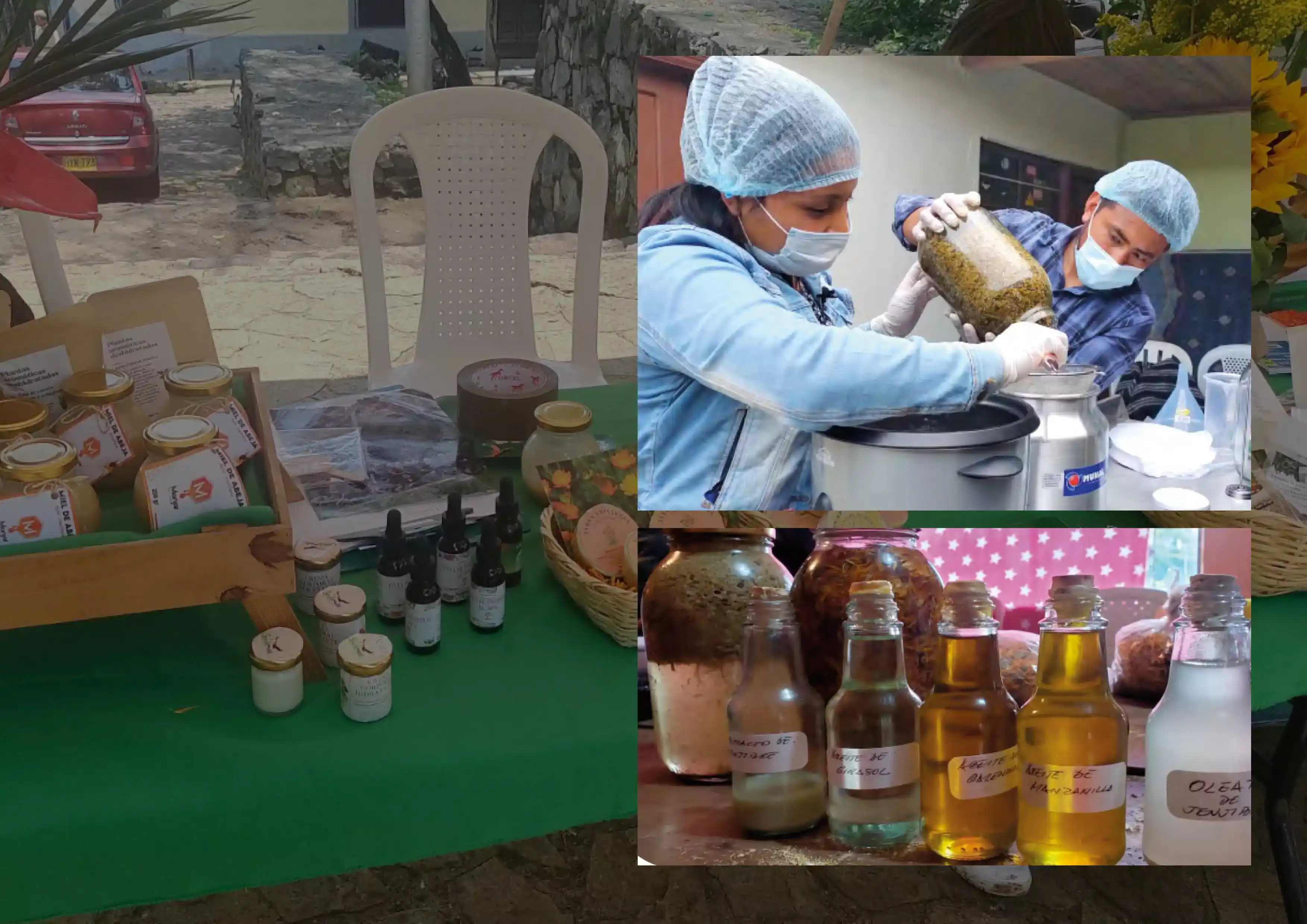
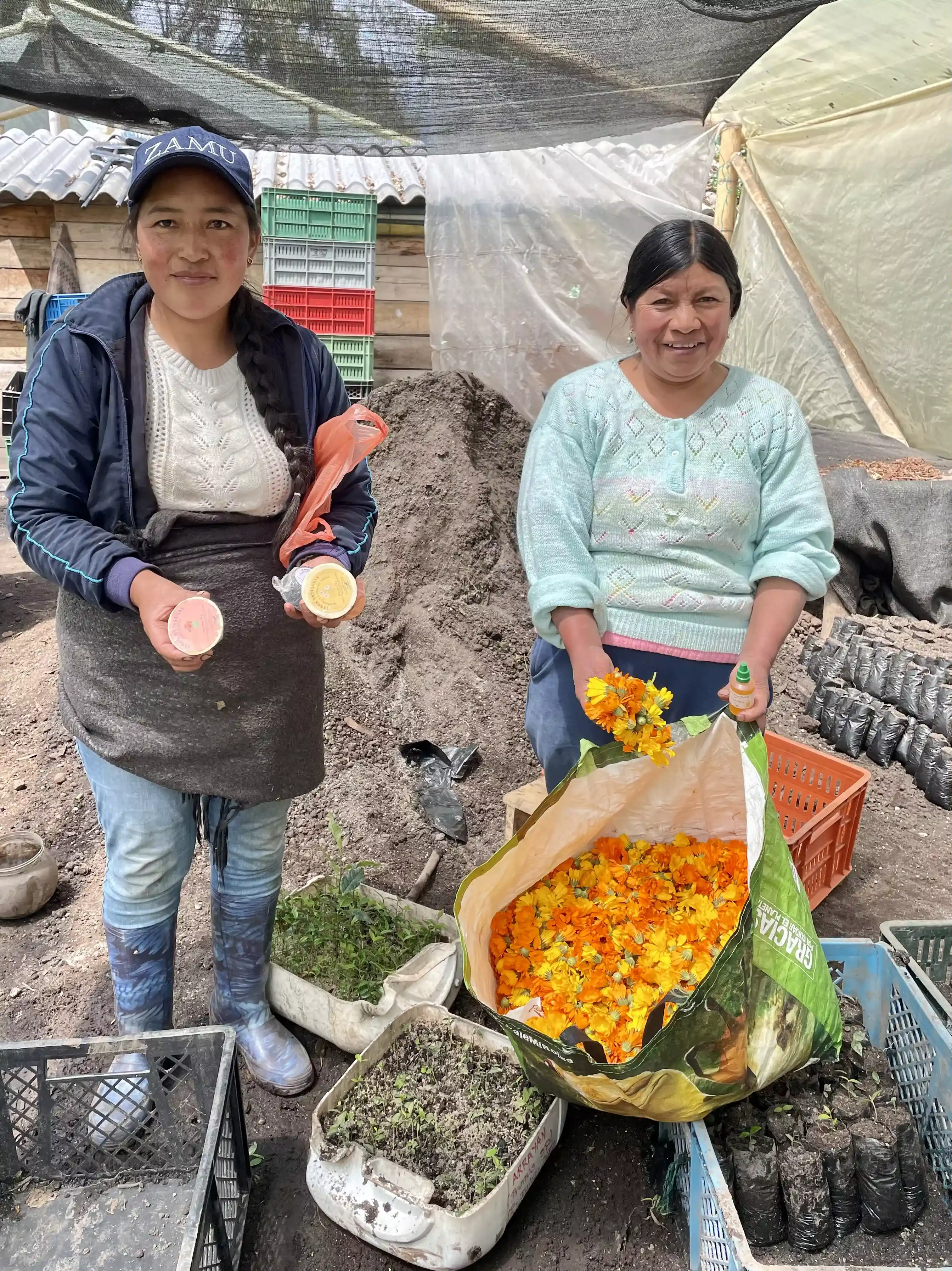
Through the various components of the project, the sustainable socio-economic development of local producers is ensured through the prism of empowerment, whether on a technical, administrative, or financial level.